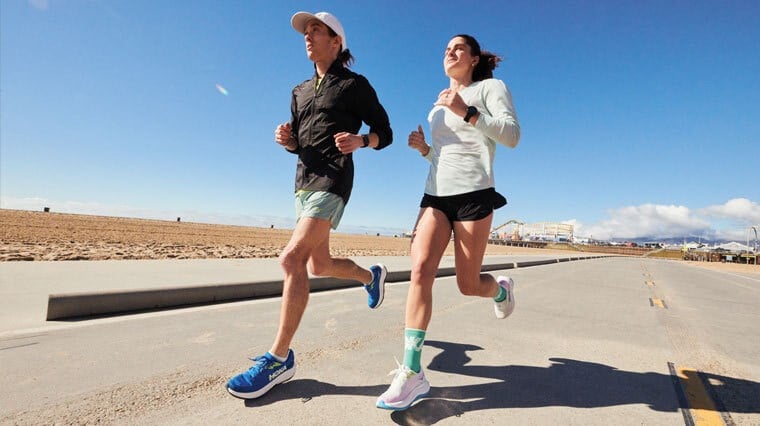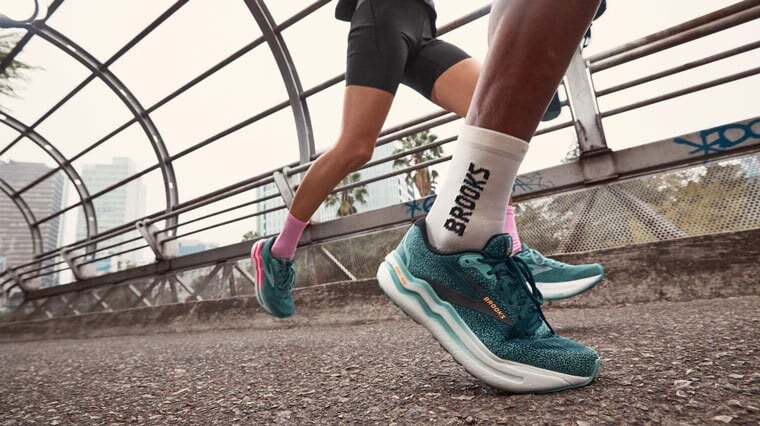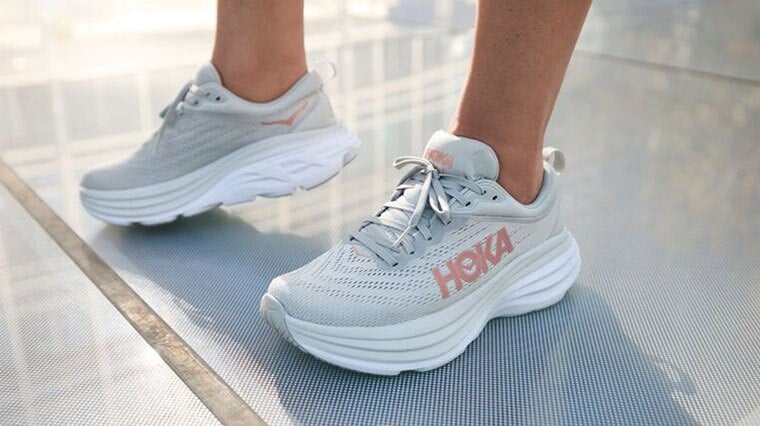The athletic footwear landscape has evolved into a sophisticated ecosystem of specialized designs, each engineered to optimize biomechanical efficiency for specific movement patterns. Understanding the fundamental differences between running shoes, walking shoes, and cross trainers isn’t just about comfort—it’s about injury prevention, performance optimization, and maximizing the return on your footwear investment.

Understanding the Biomechanical Foundation
The selection of appropriate athletic footwear begins with understanding the distinct biomechanical demands each activity places on the human locomotor system. These differences manifest in measurable force applications, ground contact patterns, and kinetic chain requirements that directly influence optimal shoe design parameters.
Walking Biomechanics: The Gentle Roll
Walking represents a controlled falling motion characterized by continuous ground contact and relatively modest impact forces. During the walking gait cycle, your body weight is distributed across both feet simultaneously during the double-support phase, which comprises approximately 20% of the gait cycle. The maximum ground reaction force during walking reaches only 1.2 times body weight, occurring during the loading response phase.
The foot progression during walking follows a heel-to-toe rolling pattern with a smooth weight transfer. This motion requires minimal shock absorption but demands exceptional flexibility through the forefoot during the terminal stance phase. The ankle dorsiflexion requirement is approximately 10-15 degrees, while plantarflexion reaches 20-25 degrees during push-off.
Running Biomechanics: High-Impact Propulsion
Running fundamentally alters the force dynamics and temporal characteristics of human locomotion. Ground reaction forces during running escalate to 2.5-3.5 times body weight, with peak impact forces occurring within the first 50 milliseconds of ground contact. The flight phase—where neither foot contacts the ground—creates a ballistic movement pattern requiring sophisticated landing and propulsion mechanics.
The running stride involves a more pronounced heel strike (in heel-strike runners) or midfoot/forefoot contact (in forefoot runners), followed by rapid force absorption and energy return. The contact time reduces to approximately 200-300 milliseconds compared to 600 milliseconds in walking, demanding rapid force transmission and efficient energy transfer systems.
Cross Training Biomechanics: Multi-Directional Complexity
Cross training activities encompass a spectrum of movement patterns including lateral cuts, rotational forces, vertical jumping, and rapid directional changes. These movements generate forces in multiple planes simultaneously, creating complex loading patterns that challenge both the shoe’s structural integrity and the foot’s stability systems.

Lateral movement generates ground reaction forces up to 2.5 times body weight in the frontal plane, while rapid deceleration can produce anterior-posterior forces exceeding 1.5 times body weight. The multi-directional nature requires shoes to maintain structural integrity across variable force vectors while providing consistent traction patterns.
Design Architecture: Engineering for Purpose
Walking Shoe Construction Principles
Walking shoes prioritize flexibility and natural foot mechanics over maximal shock absorption. The midsole construction typically features a lower stack height (15-25mm in the heel) with minimal heel-to-toe drop (4-8mm) to promote natural foot roll and efficient energy transfer.
The outsole design emphasizes durability in the heel strike zone with enhanced wear-resistant rubber compounds. Flex grooves are strategically positioned across the forefoot to accommodate the significant toe extension required during the propulsive phase of walking. The upper construction favors breathable materials with generous toe box volume to accommodate natural foot spreading during weight-bearing.
Key Walking Shoe Features:
- Heel construction: Beveled heel geometry for smooth initial contact
- Forefoot flexibility: Enhanced flex groove patterns for toe-off efficiency
- Arch support: Moderate support systems accommodating various arch types
- Cushioning focus: Heel-centered padding with minimal forefoot interference
- Upper design: Breathable, accommodating fit with minimal motion control
Running Shoe Engineering Complexity
Running shoes represent the pinnacle of athletic footwear technology, incorporating advanced materials science and biomechanical engineering. The midsole architecture varies dramatically based on intended use, with stack heights ranging from 15mm (racing flats) to 45mm+ (maximum cushioning trainers).
Modern running shoes employ sophisticated foam technologies including nitrogen-infused compounds (Nike ZoomX), thermoplastic polyurethane (Adidas Boost), and bio-based materials (New Balance FuelCell). These materials are engineered for specific energy return percentages, typically ranging from 65-85% energy return efficiency.
Running Shoe Categories and Specifications:
Daily Training Shoes: Stack height 28-35mm, drop 8-12mm, weight 9-11oz (men’s size 9). Designed for 300-500 mile lifespan with balanced cushioning and durability.
Maximum Cushioning Shoes: Stack height 35-45mm, drop 4-6mm, weight 10-13oz. Optimized for high-mileage training and recovery runs with superior shock absorption.
Racing Shoes: Stack height 15-25mm, drop 4-8mm, weight 6-8oz. Incorporate carbon fiber plates and responsive foams for competition performance.
Stability Shoes: Feature medial posting, firmer foam densities, and enhanced heel counters to control excessive pronation.
Cross Training Shoe Versatility Engineering
Cross training shoes represent a compromise between specialized performance and versatility. The design philosophy emphasizes lateral stability, multi-surface traction, and durability across varied loading patterns. Stack heights typically range from 20-28mm with minimal drop (0-6mm) to maintain ground connection and stability.

The outsole pattern features aggressive traction elements designed for both linear and lateral movement. Rubber compounds are formulated for durability rather than maximum grip, as these shoes must perform across multiple surface types including gym floors, outdoor courts, and varied training environments.
Cross Training Shoe Technical Features:
- Lateral support systems: Extended sidewall construction and reinforced upper materials
- Multi-directional outsole: Herringbone or multi-lug patterns for omnidirectional traction
- Stability platform: Wider base construction with low center of gravity
- Durability focus: High-wear materials in high-stress zones
- Moderate cushioning: Firm responsiveness for lifting and explosive movements
Performance Optimization by Activity Type
Selecting for Walking Activities
Walking shoe selection should prioritize biomechanical efficiency and long-term comfort over maximum cushioning. For recreational walking (2-4 mph), choose shoes with moderate arch support and excellent forefoot flexibility. Fitness walking (4+ mph) benefits from slightly increased heel cushioning and enhanced heel-to-toe transition systems.
Urban walking demands durable outsole compounds capable of withstanding concrete and asphalt abrasion. Trail walking requires modified tread patterns and potentially increased ankle support for uneven terrain navigation. The key specification is a heel-to-toe drop of 4-8mm to maintain natural walking mechanics.
Running Performance Optimization
Running shoe selection must account for multiple variables including pace ranges, weekly mileage, body weight, strike pattern, and biomechanical efficiency. Runners logging 20-30 miles weekly benefit from balanced daily trainers with moderate cushioning and 300-500 mile durability expectations.
High-mileage runners (40+ miles weekly) require shoe rotation strategies incorporating multiple models. A typical rotation includes daily trainers for easy-pace runs (60-70% of training), tempo shoes for threshold work (20-25%), and recovery shoes for post-workout runs (10-15%).
Pace-Specific Recommendations:
- Easy pace (8:00-10:00/mile): Maximum cushioning shoes with superior shock absorption
- Tempo pace (6:30-7:30/mile): Responsive trainers with energy return focus
- Speed work (5:30-6:30/mile): Lightweight trainers or racing flats with minimal drop
- Racing (goal pace): Competition-specific shoes with performance-enhancing technologies
Cross Training Versatility Optimization
Cross training shoes excel in environments requiring rapid transitions between movement patterns. For weightlifting-focused training, prioritize minimal drop (0-4mm) and firm midsole construction to maintain lifting stability. HIIT and circuit training benefit from enhanced lateral support and breathable upper construction.
Court sports demand specific traction patterns and lateral support systems. Indoor court surfaces require non-marking rubber compounds with herringbone patterns, while outdoor courts need more aggressive tread designs for dust and debris management.
Material Science and Longevity Considerations
Midsole Foam Technologies
Modern athletic footwear employs advanced polymer science to optimize performance characteristics. Ethylene vinyl acetate (EVA) remains the foundation material, modified with nitrogen injection, supercritical foaming processes, or chemical additives to enhance energy return and durability.
Premium foam technologies include:
- Nike ZoomX: Pebax-based compound with 85% energy return
- Adidas Lightstrike Pro: TPU-based material with superior durability
- New Balance FuelCell: Bio-based foam with consistent energy return
- Hoka ProFly: Dual-density system balancing cushioning and responsiveness
Upper Material Engineering
Upper construction significantly impacts fit, breathability, and durability. Engineered mesh provides optimal breathability with strategic support zones. Knit uppers offer sock-like fit with minimal seam construction, reducing hot spot formation during extended use.

Synthetic overlays provide structural support and durability enhancement in high-wear zones. The strategic placement of these materials influences both performance and longevity, with premium models utilizing minimal overlay construction for weight reduction.
Outsole Compound Optimization
Rubber compound selection balances traction, durability, and weight considerations. Carbon rubber provides maximum durability for heel strike zones, while blown rubber offers superior traction with reduced weight in forefoot regions.
Advanced compounds include Continental rubber (borrowed from automotive applications) for enhanced wet-weather traction and Vibram compounds for trail applications requiring maximum grip on varied surfaces.
Foot Type and Biomechanical Matching
Arch Support Requirements
Proper arch support selection requires understanding your foot’s static and dynamic arch characteristics. High-arched feet (pes cavus) require enhanced shock absorption due to reduced natural cushioning and increased pressure on heel and forefoot regions.
Flat feet (pes planus) benefit from motion control features including medial posting, firm midsole densities, and structured arch support systems. Normal arch feet typically perform well in neutral shoes with moderate support characteristics.
Pronation Pattern Analysis
Gait analysis reveals individual pronation patterns that directly influence shoe selection. Overpronation (excessive inward foot roll) requires stability or motion control shoes with medial support systems. Underpronation (limited inward roll) benefits from cushioned neutral shoes with enhanced shock absorption.
Modern gait analysis technology including pressure plates and video analysis can provide precise pronation measurements, enabling optimal shoe selection based on individual biomechanical patterns rather than generalized recommendations.
Economic Considerations and Value Optimization
Cost-Per-Mile Analysis
Athletic footwear represents a significant investment requiring careful cost-benefit analysis. Premium running shoes ($150-250) typically provide 400-600 mile lifespans, yielding cost-per-mile ratios of $0.25-0.60. Budget alternatives ($60-100) may offer 200-300 mile durability, resulting in similar or higher long-term costs.
Cross training shoes generally provide superior durability for multi-activity use but may not optimize performance for any single activity. The versatility premium can justify the investment for recreational athletes engaging in varied training modalities.
Rotation Strategy Economics
Shoe rotation strategies can significantly extend individual shoe lifespan while optimizing performance across different training stimuli. A two-shoe rotation can increase individual shoe life by 30-40% by allowing midsole recovery between uses.
Premium athletes often employ three-shoe rotations including daily trainers, tempo shoes, and recovery shoes. This strategy maximizes performance while distributing wear patterns across multiple models.
Emerging Technologies and Future Considerations
Smart Footwear Integration
Emerging technologies include embedded sensors for gait analysis, pressure mapping, and performance tracking. These systems provide real-time feedback on running efficiency, injury risk factors, and optimal replacement timing.
3D printing technology enables custom midsole construction based on individual pressure patterns and biomechanical requirements. This technology promises truly personalized footwear optimization for serious athletes.
Sustainability Considerations
Environmental consciousness increasingly influences footwear selection. Recycled materials, bio-based foams, and end-of-life recycling programs are becoming standard features. Premium brands shoes are incorporating sustainability metrics alongside performance specifications.

Durability optimization reduces environmental impact by extending product lifecycles. Investing in higher-quality footwear with superior longevity characteristics aligns performance benefits with environmental responsibility.
Final Recommendations: Making the Optimal Choice
Activity-Specific Guidelines
Choose Walking Shoes If: Your primary activity is recreational or fitness walking, you require maximum forefoot flexibility, or you need shoes for extended standing periods. Walking shoes optimize natural gait mechanics for low-impact activities.
Choose Running Shoes If: Running comprises your primary cardiovascular activity, you log 15+ miles weekly, or you participate in organized running events. Specialized running shoes provide essential shock absorption and energy return for high-impact activities.
Choose Cross Trainers If: You engage in varied activities including weightlifting, court sports, and occasional running, you prefer single-shoe versatility over specialized performance, or your training involves significant lateral movement patterns.
Investment Strategy Recommendations
For serious athletes, invest in activity-specific footwear for your primary sport while supplementing with cross trainers for secondary activities. This approach optimizes performance in your main discipline while providing versatility for cross training.
Recreational athletes may find cross trainers provide optimal value by eliminating the need for multiple specialized shoes. However, if any single activity comprises 60%+ of your training volume, specialized footwear becomes economically justified.
Professional Consultation Benefits
Gait analysis by qualified professionals can eliminate guesswork in shoe selection. Video analysis, pressure mapping, and biomechanical assessment provide objective data for optimal footwear matching.
Specialty running stores often provide these services alongside knowledgeable staff capable of interpreting results and recommending appropriate models. The investment in professional fitting can prevent injuries and optimize performance across all athletic endeavors.
The selection of appropriate athletic footwear represents a critical decision impacting performance, injury prevention, and long-term musculoskeletal health. By understanding the biomechanical foundations, engineering principles, and individual requirements outlined in this guide, you can make informed decisions that optimize your athletic potential while maximizing the return on your footwear investment.


